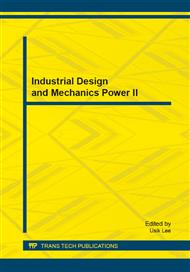p.485
p.491
p.495
p.501
p.505
p.513
p.517
p.522
p.527
Research on Parameter Identification of Electromagnetic Actuator for Diesel Speed Governing
Abstract:
To identify parameters of electromagnetic actuators with analytical models, there are problems such as poor model accuracy, multiple physical fields coupling of model, and slow convergence. Based on error sensitivity numerical analysis, a parameter semi-analytical identification method for electromagnetic actuators is proposed. In this article, a diesel engine speed governing electromagnetic actuator is taken as the research object. First, with finite element method, a numerical simulation model of the electromagnetic actuator is established, and sensitivity of main geometrical parameters relative to electromagnetic force is analyzed. Secondly, with theoretical deduction, a difference model of the nominal and measurement electromagnetic force is built, and the electromagnetic actuators geometrical parameter identification formula is gotten. Thirdly, different numerical methods to construct a system error sensitivity matrix are compared, and the compared result is the accuracy of central difference better. Finally, the average static characteristics error of the electromagnetic actuator is reduced from 3.3174 to 1.0182. Therefore, the identification method is verified effective and feasible.
Info:
Periodical:
Pages:
505-512
Citation:
Online since:
October 2013
Authors:
Price:
Сopyright:
© 2013 Trans Tech Publications Ltd. All Rights Reserved
Share:
Citation:


